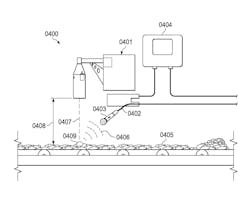Artificial intelligence—and its machine learning applications in particular—have been attracting the attention of industrial companies both large and small. However, if you’ve been following any of the news around machine learning, you’ve likely heard that, as advanced as this technology has become, it’s still quite a ways from being “ready for prime time” in industry. And while this is true, it doesn't mean the technology is not ready for application in meaningful ways.
Shahmeer Mirza, senior research and development engineer at PepsiCo., is proving that machine learning has plenty of real world usefulness today through his work with the concept at Frito-Lay, a subsidiary of PepsiCo.
While speaking with Mirza recently, he explained that PepsiCo has been applying adaptive process control with statistical process control to its traditional manufacturing control processes since the late 1990s. While these projects could be considered artificial intelligence (AI), at least to some degree, the company had not been using algorithmic machine learning to a large extent in these projects.
“One of my first projects at the company involved building systems that could sense the texture of chips without destroying them,” said Mirza. For this project, he was capturing acoustic data and manually processing it.
“It's a system that hits the chip with lasers, listens to the sound coming off them, and then uses that data to correlate the sound into texture,” Mirza said. This system could provide an automated quality check for the company’s chip processing systems.
Writing code for this project to automate the processing of sensor data led Mirza to realize the potential impact of programming to handle the large amounts of data collected in industrial applications.
“I realized I could combine the principles of machine learning with computer vision technology to develop more advanced sensors and process control schemes,” he said.
This realization and subsequent work led to a patent on a photo-acoustic sensor for use as a texture sensor. “The patent made me realize how quickly we were able to progress with the project development because of large scale data analysis enabled by programs I wrote,” Mirza said.
From this experience, Mirza then began developing a machine learning model for use with a vision system to calculate the weight of potatoes being processed. At one Frito-Lay site, the company employed a vision system to gather data on the size and number of potatoes being processed. The site also used weighing elements on conveyors to weigh all the potatoes used in a production run.
Based on his understanding of these separate vision and weighing systems, Mirza came up with an idea to build “a model that looked at the images of the potatoes that could also predict the weight of actual potatoes.” This machine learning model would enable a mass flow estimation of the potatoes moving through the processing system solely using the visual information captured by the cameras.
Explaining the bottom line impact of this machine learning application, Mirza said theweighing elements used on the pilot system conveyor cost about $300,000 per line. Using the mass flow estimator—which is essentially a soft sensor—that weight data is now available as “an additional data point we get from our existing vision system at no additional charge,” he said. This represents a considerable savings for the company, considering they have 35 such lines in the U.S. alone.
Other projects Mirza has been working on involve “developing deep learning models for use with machine vision systems usinga variety of machine learning algorithms, including random forest classifiers and other ensemble methods,” he said. “For example, we have a vision system that looks at every potato going through our peeling process—where we abrasively peel our potatoes. I wrote an algorithm that can tell us what our percent peel is; that is, how peeled a potato is after going through the process versus how unpeeled it is. With this information, we can optimize our peeling so we don't over-abrate the potato and peel away some of its flesh.”
Mirza said this project, which is still in process, is estimated to save the company over a million dollars a year based on its ability to optimize the potato peeling process in the U.S. alone. With a global deployment, additional savings are expected.
Underscoring the value PepsiCo sees in machine learning, the company is having Mirza teach an internal course with his R&D associates on advanced machine learning and computer vision. He said an introductory course was taught in the U.S. this past fall, which the company now plans to hold internationally in 2019, along with the roll out of a more advanced course later this year.
“PepsiCo has seen that the future of industry is data and they’re looking to use it in new and effective ways to improve our processes and products,” said Mirza. “Understanding the importance of machine learning is why they’ve given me a platform to teach this to others in the company."
About the Author
David Greenfield, editor in chief
Editor in Chief

Leaders relevant to this article:
